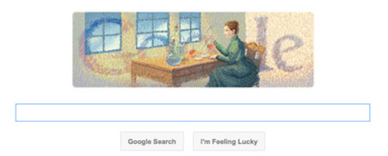
Celebrated for her pioneering research in radioactivity, Curie was given the Hollywood treatment in 1943 with a film called Madame Curie. The actress Greer Garson portrayed Madame Curie and Aldous Huxley worked (uncredited) on the screenplay. Brought on to the project by Anita Loos, Huxley’s original screenplay was deemed too literary, hence the lack of credit. Like all biopics the resulting film was inaccurate and left things (such as Curie’s family) out of the plot to further the storyline. For instance the film makers scrapped any mention of Curie’s sister Bronislawa, an obstetrician. Because Hollywood films have a strict scienceywomen limit. Bronislawa came to Paris first, the sisters had a pact that Marie would provide financial assistance for Bronislawa’s medical studies, on the condition Bronislawa would return the favour. No Bronislawa, no pioneering scientific research.

Curie died in July 1934 of aplastic anaemia. It is well known this is a result of lack of proper safety measures and exposure to radiation. Curie’s papers are considered too dangerous to handle and are currently locked away in lead lined boxes. Those wishing to handle them must wear protective gear.
Her daughter Irène Joliot-Curie followed in her mother’s footsteps, sharing the Nobel Prize for chemistry with her husband Frédéric Joliot-Curie for the discovery of artificial radioactivity in 1935.
Happy birthday Marie Curie, may you inspire many young women to pursue the sciences.
Squeamish Kate
 RSS Feed
RSS Feed
